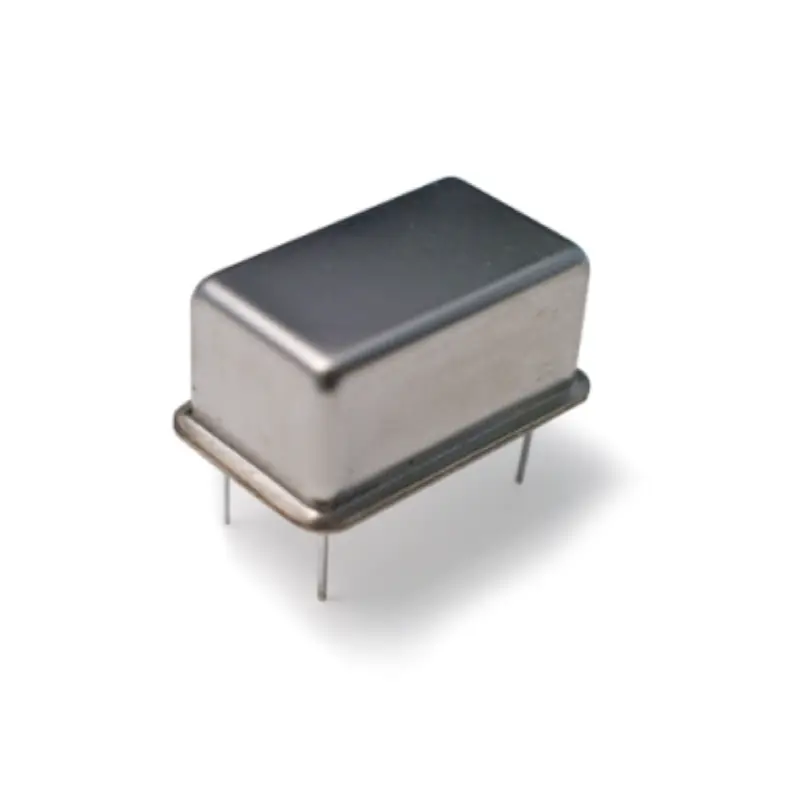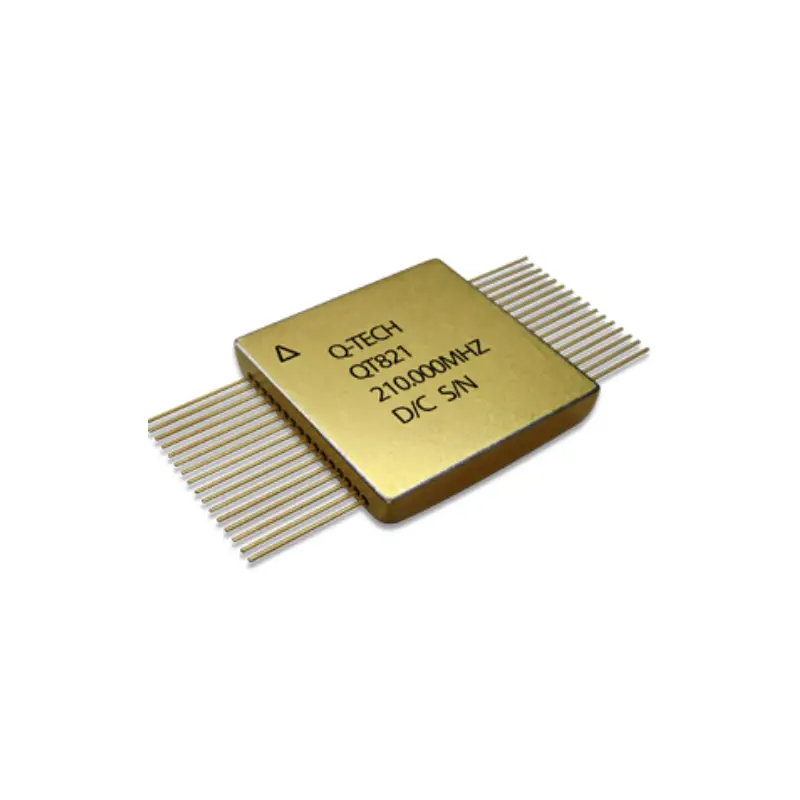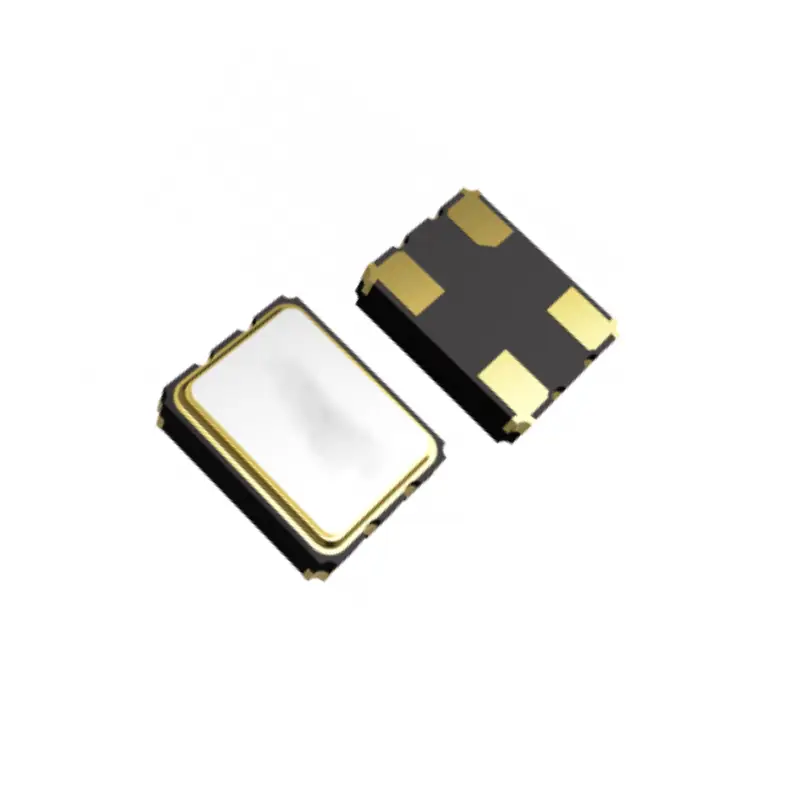Voltage Controlled Crystal Oscillator
We offer high-precision Voltage Controlled Crystal Oscillators (VCXOs) designed for applications requiring fine-tuned frequency control. Our VCXOs provide exceptional stability and accuracy, ideal for telecommunications, broadcast equipment, and phase-locked loop (PLL) systems. With customizable frequency ranges and output options, our VCXOs ensure reliable performance and meet stringent industry standards. Explore our selection for precise frequency management.
Customize Voltage Controlled Crystal Oscillator Wholesale to Delight Your Clients
Delight clients with customized Voltage Controlled Crystal Oscillators (VCXOs) wholesale. We offer tailored frequency ranges, stability levels, and output options to meet specific application needs. Enhance your clients’ systems with precise frequency control and reliable performance. Provide unique, branded solutions with custom labeling and specifications. Boost client satisfaction with our high-quality, customizable VCXOs.
Frequency Pulling Range (Control Voltage Range):
We offer customization of the frequency pulling range, which determines how much the oscillator’s frequency can be adjusted by varying the control voltage. This is crucial for applications requiring precise frequency modulation or synchronization. We can tailor the pulling range to match your specific needs, ensuring optimal performance within your system. Whether you require a narrow range for fine-tuning or a wider range for broader frequency adjustments, our VCXOs can be customized to deliver the desired control.
Output Waveform and Logic Levels:
We offer a variety of output waveform and logic level options to ensure compatibility with your system. Choose from CMOS, LVCMOS, LVPECL, or sine wave outputs, depending on your application’s requirements. We can also customize the output drive strength to accommodate various load conditions, ensuring proper signal transmission and minimizing signal distortion. Select the appropriate logic levels to seamlessly integrate the VCXO with other components in your circuit. This flexibility ensures optimal performance and compatibility within your electronic design.
Frequency Stability and Accuracy:
Frequency stability is paramount in VCXOs, and we provide customizable options to meet stringent stability requirements. We can fine-tune the oscillator to achieve exceptional frequency stability over temperature and time. This ensures consistent performance in demanding environments. Additionally, we offer options for improved frequency accuracy, guaranteeing that the oscillator operates within your specified tolerance. Whether you need high stability for telecommunications or accurate frequency for precision timing, our VCXOs can be tailored to your specifications.
Packaging and Mounting Options:
We provide a range of packaging and mounting options to suit your assembly requirements. Choose from surface mount (SMD) and through-hole packages, selecting the appropriate package size and pin configuration to optimize board space and simplify manufacturing. We can also customize the packaging material and sealing techniques to meet specific environmental or reliability requirements. Options for tape and reel packaging are available for automated assembly processes, ensuring efficient and cost-effective production. This customization ensures that the VCXO seamlessly integrates into your manufacturing process.
Weishi Electronics: Your Reliable Voltage Controlled Crystal Oscillator Manufacturer
Weishi Electronics is your trusted crystal oscillator manufacturer, specializing in high-performance Voltage Controlled Crystal Oscillators (VCXOs). As a leading crystal oscillator manufacturer, we offer a wide range of customizable VCXOs, ensuring precise frequency control and exceptional stability for your applications. Our products cater to diverse needs, from telecommunications to industrial automation. We provide tailored solutions with customizable frequency pulling ranges, stability levels, and output options. Choose Weishi Electronics for reliable, top-rated VCXOs that meet your exact specifications.

voltage controlled crystal oscillator
We offer high-precision Voltage Controlled Crystal Oscillators (VCXOs), providing exceptional frequency control and stability. Our VCXOs are ideal for applications demanding precise frequency adjustments, like telecommunications, broadcast systems, and phase-locked loops. With customizable frequency pulling ranges and output options, our solutions ensure reliable performance. Trust our VCXOs for your critical timing needs.

QTV724 Voltage Controlled Crystal Oscillator
We provide the QTV724 Voltage Controlled Crystal Oscillator, engineered for precise frequency control and exceptional stability. This VCXO offers a wide frequency pulling range and customizable output options, making it ideal for applications requiring fine-tuned frequency adjustments. Designed for reliability, the QTV724 ensures consistent performance in demanding environments. Explore our offerings for dependable frequency management solutions.

voltage controlled temperature compensated crystal oscillator
We offer high-precision Voltage Controlled Temperature Compensated Crystal Oscillators (VCTCXOs) for applications demanding exceptional frequency stability across varying temperatures. Our VCTCXOs combine voltage control with temperature compensation, ensuring minimal frequency drift. With customizable frequency ranges and output options, our VCTCXOs are ideal for telecommunications, GPS, and precision timing applications. Experience reliable performance and superior stability with our VCTCXOs.
What is voltage controlled crystal oscillator?
A Voltage Controlled Crystal Oscillator (VCXO) is a type of crystal oscillator where the oscillation frequency can be varied by applying a control voltage. This is achieved by incorporating a varactor diode or other voltage-variable capacitance device into the oscillator circuit. The varactor’s capacitance changes in response to the applied voltage, which in turn slightly alters the resonant frequency of the quartz crystal. This allows for fine-tuning or modulation of the output frequency, making VCXOs essential in applications requiring precise frequency control.
Unlike fixed-frequency crystal oscillators, VCXOs provide the flexibility to adjust the output frequency within a certain range, known as the pulling range. This adjustability is crucial in systems requiring frequency synchronization, phase-locked loops (PLLs), and frequency modulation (FM). The stability of the quartz crystal ensures that the frequency remains accurate and stable within the pulling range, making VCXOs reliable components in telecommunications, broadcasting, and other precision timing applications.
Voltage Controlled Crystal Oscillator Working Principle
How does a voltage controlled oscillator work?
The working principle of a Voltage Controlled Crystal Oscillator (VCXO) relies on the piezoelectric effect of a quartz crystal and the ability to slightly alter its resonant frequency by applying a variable control voltage.
At its core, a VCXO utilizes a quartz crystal, which vibrates at a very stable frequency when subjected to an electrical field. This inherent stability makes crystals ideal for generating precise timing signals. However, unlike fixed-frequency crystal oscillators, VCXOs incorporate a varactor diode or other voltage-variable capacitance device within the oscillator circuit.
The control voltage applied to the varactor diode changes its capacitance, which in turn slightly alters the resonant frequency of the crystal. This “pulling” of the crystal’s frequency allows for fine-tuning or modulation of the output signal. The range of frequency adjustment, known as the pulling range, is determined by the characteristics of the varactor diode and the design of the oscillator circuit. By varying the control voltage, the output frequency can be precisely adjusted to meet specific application requirements, such as phase-locked loops (PLLs) or frequency modulation (FM).
The stability and accuracy of a VCXO depend on the quality of the quartz crystal and the design of the oscillator circuit. High-quality VCXOs are designed to minimize frequency drift over temperature and time, ensuring consistent performance in demanding environments. The ability to control the output frequency with a voltage signal makes VCXOs essential components in applications requiring precise frequency control and synchronization, such as telecommunications, broadcasting, and test equipment.
How to Measure Crystal Oscillator?
Measuring a crystal oscillator’s performance accurately requires a combination of appropriate equipment and careful technique. Here’s a breakdown of the key steps:
1. Frequency Measurement and Stability:
The primary measurement for a crystal oscillator is its output frequency. This is typically done using a frequency counter or an oscilloscope with frequency measurement capabilities. The frequency counter provides a precise digital readout of the oscillator’s frequency, while an oscilloscope allows you to visually verify the waveform and measure its period, which can be converted to frequency.
To assess frequency stability, the measurement should be taken over a period of time and under varying conditions, such as temperature changes. This helps determine the oscillator’s frequency drift and jitter, which are critical parameters for many applications.
For more accurate stability measurements, a phase noise analyzer can be used. This instrument measures the phase fluctuations of the oscillator’s output, providing a detailed analysis of its frequency stability.
The phase noise measurement is often expressed in dBc/Hz (decibels relative to the carrier per hertz) and is crucial for applications requiring low jitter and high signal purity, such as telecommunications and RF systems. Additionally, temperature chambers or environmental test chambers are used to systematically vary the operating temperature and measure the frequency shift, providing a temperature stability profile of the crystal oscillator.
2. Waveform Integrity and Voltage Levels:
Beyond frequency, the integrity of the oscillator’s output waveform is crucial. An oscilloscope is essential for visualizing the waveform and measuring its characteristics, such as rise and fall times, voltage levels, and duty cycle.
The waveform should be clean and consistent, with minimal distortion or noise. Measuring the voltage levels ensures that the oscillator’s output is compatible with the intended logic family (CMOS, LVCMOS, LVPECL, etc.). This step is vital for ensuring proper signal transmission and avoiding signal degradation.
To measure the voltage levels, connect the oscilloscope probes to the oscillator’s output pins and observe the waveform’s peak-to-peak voltage, high-level voltage (VOH), and low-level voltage (VOL).
Ensure that these values are within the specifications provided in the oscillator’s datasheet. For rise and fall times, use the oscilloscope’s measurement functions to determine the time taken for the signal to transition between specified voltage levels. This ensures that the oscillator meets the timing requirements of the application. Additionally, impedance matching is checked with a network analyzer, to ensure the output is not being negatively effected by the downstream circuitry.
What is the difference between VCSO and VCXO?
While both VCSO (Voltage Controlled Sawtooth Oscillator) and VCXO (Voltage Controlled Crystal Oscillator) are voltage-controlled oscillators, they differ significantly in their fundamental operating principles, output waveforms, and applications.
A VCXO utilizes the piezoelectric properties of a quartz crystal to generate a stable frequency, which is then slightly adjusted by varying a control voltage. This results in a highly stable output frequency with minimal phase noise, making VCXOs ideal for applications requiring precise timing and frequency control, such as telecommunications and phase-locked loops (PLLs).
In contrast, a VCSO generates a sawtooth waveform by charging and discharging a capacitor using a voltage-controlled current source. The output frequency of a VCSO is determined by the charging and discharging rate, which is directly influenced by the control voltage. This method allows for a wider frequency pulling range compared to VCXOs, but at the cost of lower frequency stability and higher phase noise. VCSOs are typically used in applications where frequency modulation or sweeping is required, such as function generators, audio synthesizers, and some types of signal processing.
Essentially, the key difference lies in the stability and precision of the output signal. VCXOs offer exceptional frequency stability and are used when accuracy is paramount. VCSOs, with their wider tuning range and simpler design, are employed when a variable frequency is needed, but precise stability is less critical. The quartz crystal in a VCXO is the stabilizing factor, where a VCSO relies on the RC time constant, which is effected by many variables.
Voltage Controlled Oscillator Using Op-Amp
A Voltage Controlled Oscillator (VCO) using an op-amp can be designed using various configurations, but a common and relatively simple approach involves a relaxation oscillator circuit.
Basic Principle:
The circuit uses an op-amp as a comparator, combined with an RC (resistor-capacitor) network and feedback to generate a periodic waveform. The control voltage modulates the charging or discharging rate of the capacitor, thus controlling the oscillation frequency.
Circuit Configuration:
- Comparator: The op-amp is configured as a comparator, switching its output between its positive and negative saturation voltages.
- RC Network: A capacitor is connected to the inverting input of the op-amp, and a resistor is used to charge and discharge it.
- Feedback Network: A feedback network, typically involving resistors, is used to provide hysteresis. This hysteresis ensures that the op-amp switches cleanly between its saturation states.
- Control Voltage: The control voltage is applied to the charging/discharging path, influencing the rate at which the capacitor charges or discharges.
Working Mechanism:
- Charging Phase: When the op-amp’s output is at its positive saturation voltage, the capacitor starts charging through the resistor. The rate of charging is influenced by the control voltage.
- Switching Threshold: As the capacitor voltage reaches a certain threshold determined by the feedback network, the op-amp switches its output to the negative saturation voltage.
- Discharging Phase: The capacitor now starts discharging through the resistor. The rate of discharging is again influenced by the control voltage.
- Switching Threshold: When the capacitor voltage reaches the lower threshold, the op-amp switches back to the positive saturation voltage, and the cycle repeats.
Control Voltage Influence:
- By varying the control voltage, you change the charging and discharging rates of the capacitor.
- A higher control voltage typically results in faster charging and discharging, leading to a higher oscillation frequency.
- A lower control voltage results in slower charging and discharging, leading to a lower oscillation frequency.
Op-Amp Choice:
- The op-amp should have sufficient bandwidth and slew rate to handle the desired oscillation frequency.
- For higher frequencies, a high-speed op-amp is necessary.
Advantages and Disadvantages:
- Advantages: Simple circuit, wide frequency range, easy to implement.
- Disadvantages: Less stable frequency compared to crystal oscillators, temperature drift, and potential for distortion.
Applications:
- Function generators
- Audio synthesizers
- Voltage-controlled filters
- Simple modulation circuits
It’s important to note that while this op-amp based VCO is conceptually simple, achieving high stability and linearity can require careful component selection and circuit design.
Please feel free to contact us now if you are interested in our electronic components~